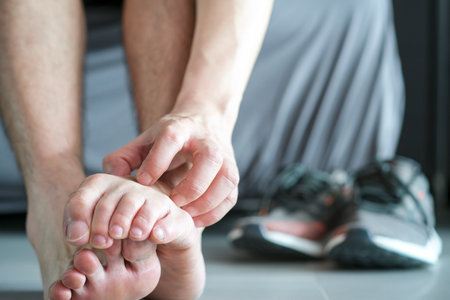Introduction to Stroke Rehabilitation in the UK
Stroke remains one of the leading causes of adult disability across the United Kingdom, impacting thousands of lives each year. Within the unique context of British healthcare, the National Health Service (NHS) has developed comprehensive care pathways that address both acute management and long-term rehabilitation for stroke survivors. These pathways reflect a holistic approach rooted in patient-centred care, integrating multidisciplinary teams and evidence-based interventions at every stage. The prevalence of stroke in the UK has prompted NHS Trusts to prioritise early intervention, seamless transitions from hospital to community settings, and ongoing support for individuals and their families. Distinctive features of the British system—such as free-at-the-point-of-use services, close collaboration between health and social care providers, and regionally adapted rehabilitation programmes—set the stage for innovative practices in stroke recovery. In this article, we will explore real-life case studies from various NHS Trusts, drawing out key lessons and practical insights that inform best practice in British stroke rehabilitation.
2. Multidisciplinary Team Approaches in NHS Trusts
Stroke rehabilitation within British NHS Trusts is celebrated for its comprehensive multidisciplinary team (MDT) approach. Every member of the team brings unique expertise, ensuring holistic care tailored to each patient’s needs. This collaborative ethos is at the heart of successful outcomes seen across stroke units throughout the UK.
Key Roles Within the MDT
The following table illustrates the primary roles involved in stroke rehabilitation and their core contributions:
| Professional Role | Main Responsibilities |
|---|---|
| Physiotherapist | Supports mobility, balance, and strength recovery using tailored exercise programmes and hands-on therapy. |
| Occupational Therapist | Assists with regaining daily living skills such as washing, dressing, and preparing meals; provides adaptive equipment recommendations. |
| Speech and Language Therapist | Addresses communication difficulties and swallowing problems, often providing tailored exercises and strategies for both patients and families. |
| Nurse | Delivers round-the-clock clinical care, medication management, emotional support, and coordinates between different professionals. |
| Family Members | Offer vital emotional support, participate in goal setting, and reinforce therapy strategies at home post-discharge. |
The British Approach: Collaborative and Patient-Centred
Within UK stroke units, regular MDT meetings are held to review patient progress, set goals, and adjust care plans. These discussions not only include medical staff but also actively involve the patient and their family members—reflecting a core NHS value of partnership in care. The emphasis on open communication ensures everyone understands the rehabilitation journey, fostering a sense of shared purpose.
Practical Lessons from NHS Trusts
Case studies from various NHS Trusts highlight that when therapists, nurses, and families work seamlessly together, patients are more likely to regain independence and confidence. For example, involving family members early allows them to learn practical techniques from professionals—such as safe transfer methods or communication aids—which can be continued at home. This integrated approach is widely considered a best practice model across British stroke services.

3. Integrated Community Stroke Services
One of the most transformative developments in British stroke rehabilitation has been the rise of integrated community stroke services. Across NHS Trusts, there is growing recognition that recovery does not end at hospital discharge; rather, it evolves within the home and community. Early Supported Discharge (ESD) programmes have become a cornerstone of this approach, enabling suitable stroke survivors to leave hospital sooner and continue their rehabilitation in familiar surroundings. This not only promotes independence but also helps reduce the emotional strain often associated with prolonged hospital stays.
The Role of Community NHS Teams
Community NHS teams, composed of physiotherapists, occupational therapists, speech and language therapists, and nurses, work collaboratively to deliver bespoke care plans tailored to each individual’s needs. These multidisciplinary teams bridge the gap between acute care and long-term support, ensuring that therapy remains consistent and responsive as a person’s condition evolves. They also provide invaluable guidance to families and carers, equipping them with practical skills and emotional reassurance during what can be a challenging time.
Ongoing Rehabilitation Journey
The rehabilitation journey for stroke survivors in the UK is seldom linear. Progress may ebb and flow, requiring patience, perseverance, and regular review of goals. Community-based services offer a gentle continuity, checking in regularly with survivors to celebrate milestones or adjust interventions where necessary. Peer support groups—often facilitated by NHS Trusts or charities—play a meaningful role in reducing isolation and encouraging participation in daily life. This holistic model recognises that true recovery encompasses physical function as well as psychological wellbeing.
Embracing Local Resources
NHS Trusts across Britain are increasingly partnering with local authorities and voluntary organisations to enhance the range of support available after stroke. Whether through access to adapted exercise classes, social clubs, or volunteering opportunities, these collaborations help individuals rediscover confidence and purpose within their own communities. In this way, integrated community stroke services are not just about medical rehabilitation—they are about restoring dignity and hope, one step at a time.
4. Innovative Rehabilitation Strategies and Assistive Technology
Across the United Kingdom, NHS Trusts are continually seeking ways to enhance the quality of stroke rehabilitation by integrating innovative strategies and state-of-the-art assistive technologies. These approaches not only address the physical challenges patients face but also cater to their psychological wellbeing and independence. Below, we explore real-life case examples that demonstrate how British NHS Trusts have successfully harnessed cutting-edge therapies and digital solutions to optimise recovery.
Integrating Virtual Reality for Enhanced Engagement
The Salford Royal NHS Foundation Trust piloted a virtual reality (VR) programme aimed at improving upper limb mobility in post-stroke patients. Patients participated in interactive VR exercises tailored to their abilities, resulting in increased motivation and engagement during therapy sessions. Feedback from both therapists and patients indicated significant improvements in hand-eye coordination and confidence in daily tasks.
Robotics-Assisted Rehabilitation: Case from Sheffield Teaching Hospitals
Sheffield Teaching Hospitals NHS Foundation Trust introduced robotic exoskeletons as part of their stroke rehabilitation pathway. These devices supported early mobilisation, allowing patients with severe mobility impairments to participate actively in walking exercises. The following table highlights outcomes observed over a six-month trial:
| Therapy Type | Number of Patients | Mobility Improvement Rate |
|---|---|---|
| Traditional Physiotherapy | 25 | 60% |
| Robotics-Assisted Therapy | 25 | 84% |
Digital Monitoring Tools for Personalised Care
The Royal Free London NHS Foundation Trust adopted wearable sensors and mobile applications for remote monitoring of patients’ progress after discharge. These tools enabled clinicians to track movement patterns, adherence to home exercise programmes, and detect early signs of complications. Regular digital check-ins fostered a sense of reassurance among patients and family carers, contributing to more personalised care plans.
Assistive Technology in Everyday Life: The Leicester Approach
NHS Leicester City implemented smart home adaptations—such as voice-activated lighting and automated medication dispensers—for stroke survivors returning home with cognitive or mobility challenges. One patient, Mrs. E., described how these adjustments “restored [her] independence” and reduced the burden on her daughter, who acted as her primary carer.
Summary Table: Selected Innovations Across NHS Trusts
| NHS Trust | Innovation | Main Benefit Reported |
|---|---|---|
| Salford Royal | Virtual Reality Exercises | Increased engagement & confidence |
| Sheffield Teaching Hospitals | Robotic Exoskeletons | Faster mobility improvement |
| Royal Free London | Wearable Sensors & Apps | Bespoke care & reassurance for carers |
| NHS Leicester City | Smart Home Adaptations | Sustained independence at home |
The collective experience from these British NHS Trusts underscores the transformative potential of combining clinical expertise with technological innovation. By tailoring interventions to individual needs and leveraging assistive technology, UK stroke rehabilitation services continue to set benchmarks for compassionate, effective long-term care.
5. Patient and Carer Perspectives
First-hand experiences from stroke survivors and their carers within the NHS reveal the profound impact of personalised care, wellbeing initiatives, and peer support networks throughout the rehabilitation journey. Many survivors speak of the initial shock following their stroke and the overwhelming uncertainty that followed hospital discharge. For instance, John, a retired teacher from Manchester, recalls how the personal attention he received from his community physiotherapist gave him hope: “She listened to my fears about going home, tailored my exercises to what mattered most to me, and even suggested ways I could stay active with my grandchildren.” Such stories underscore the value of individualised rehabilitation plans that respect each persons goals and lifestyle.
Carers also play a vital role in stroke recovery across the UK. Sarah, who looks after her mother in Bristol, shares how carer support groups offered through her local NHS Trust helped her feel less isolated: “Knowing I wasnt alone made all the difference. The group gave me practical tips but also space to talk about my worries.” These peer-led spaces foster emotional resilience and provide trusted advice on navigating NHS services.
Personal wellbeing is increasingly recognised as essential within British stroke rehabilitation. Survivors highlight the benefits of initiatives like gardening projects, arts sessions, and adapted sports—often coordinated by voluntary organisations working alongside NHS teams. Such opportunities enable individuals to regain confidence and rebuild social connections, which are central to life after stroke.
Peer support remains a cornerstone in many case studies. From informal coffee mornings at hospital discharge units to structured mentoring schemes run by charities like the Stroke Association, sharing lived experiences helps both survivors and carers find reassurance during challenging times. It is these compassionate, community-driven approaches that embody best practice within UK stroke care—reminding us that recovery is not just about physical ability but about restoring dignity, independence, and hope.
6. Challenges and Opportunities in British Stroke Rehabilitation
The case studies explored from various NHS Trusts shed light on the complexities faced by stroke rehabilitation services in the UK. While there are notable successes, several challenges persist that influence the quality and consistency of care.
Staffing Pressures
One of the most pressing issues across NHS Trusts is staffing. Recruitment and retention of specialist stroke nurses, physiotherapists, occupational therapists, and speech and language therapists remain difficult, particularly in rural or less affluent regions. The reliance on agency staff or rotating locums can sometimes disrupt continuity of care, impacting patient outcomes and team morale.
Funding Constraints
Financial pressures continue to affect the capacity to deliver comprehensive, multidisciplinary stroke rehabilitation. Many case studies highlight how funding shortfalls lead to limited therapy hours, longer waiting times for community-based services, and reduced access to cutting-edge rehabilitation technology. This situation often forces trusts to make difficult choices about prioritisation of resources.
Health Inequalities
Despite the NHS’s core value of equity, disparities persist in access to high-quality stroke rehabilitation across England, Scotland, Wales, and Northern Ireland. Socioeconomic factors, regional variation, language barriers, and differences in local commissioning arrangements all contribute to unequal outcomes for stroke survivors. Addressing these inequalities is a continuing challenge highlighted by frontline clinicians and service users alike.
Opportunities for Quality Improvement
Amidst these challenges, there are promising opportunities for advancement. Many NHS Trusts are harnessing digital tools—such as tele-rehabilitation platforms—to extend reach into underserved communities. Cross-trust collaborations and shared learning initiatives, like those discussed in our case studies, foster innovation and consistency in best practice delivery. Further investment in staff training and career development pathways can also help attract and retain skilled professionals.
A Compassionate Path Forward
The experiences drawn from NHS Trusts demonstrate resilience and adaptability within British stroke rehabilitation services. By listening to both patients and practitioners, focusing on targeted resource allocation, and embracing new models of care, there is great potential for improvement. Through a gentle but determined commitment to overcoming challenges, the NHS can continue its tradition of compassionate support for every stroke survivor’s journey towards recovery.
7. Key Lessons and Future Directions
Drawing from the diverse case studies across NHS Trusts in Britain, several key lessons emerge for practitioners, policy makers, and families navigating the journey of stroke rehabilitation. These insights not only highlight best practices but also underscore the importance of a gentle, person-centred approach to long-term support.
Actionable Insights for Practitioners
Clinicians and allied health professionals are encouraged to champion interdisciplinary collaboration and continuous communication with both patients and their families. Early intervention, coupled with individually tailored rehabilitation plans, remains paramount. Emphasising meaningful goal-setting—rooted in each patient’s personal values and daily routines—can significantly enhance motivation and functional outcomes.
Guidance for Policy Makers
Policy makers can support stroke survivors by prioritising equitable access to rehabilitation services across all regions. Investment in community-based programmes and technological innovations, such as tele-rehabilitation, helps bridge service gaps. Moreover, policies should encourage ongoing training for staff in compassionate communication and holistic care planning.
Support for Families and Carers
The role of families is central throughout recovery. Providing carers with clear information, emotional support, and practical training empowers them to confidently assist loved ones at home. Peer-support networks and respite services are essential lifelines, helping families navigate both challenges and successes along the way.
A Compassionate, Person-Centred Ethos
Underpinning all effective stroke rehabilitation is a commitment to treating each individual with dignity, empathy, and patience. Recognising the unique life story of every survivor fosters trust and resilience—qualities vital for long-term wellbeing.
Looking Ahead: Building on Experience
The British experience demonstrates that sustainable improvement in stroke care depends on continual learning from real-world cases. As NHS Trusts share outcomes and refine strategies together, it becomes possible to shape a future where every survivor receives the comprehensive, compassionate care they deserve.
By embracing these lessons collectively, practitioners, policy makers, and families can create a supportive environment—one where recovery is not just about clinical milestones but also about restoring hope, independence, and quality of life.


